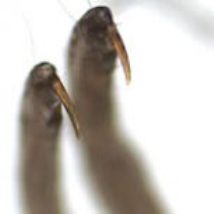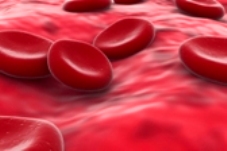What could lice possibly feed on?
Sure, human lice live along the hair and scalp of humans,
but what are they doing in there? The answer is blood!
Pediculus humanus survive by sucking the blood out of its host,
humans. To feed, the louse (singular) penetrates the skin
with
its mouth parts
(stylets) and pours in some of its own saliva to prevent
clotting. Not only is this animal using the stylets but also
an adaptive tongue to hold the skin back. Then, it sucks the blood
by pumping its throat, sending the blood into its digestive tract.

If the louse is left undisturbed, bloodsucking may last for long periods of time. Lice are found to feed quite often, usually every three to six hours. They are also found not to survive away from the human host for more than 48 hours. While it is feeding on the human, the louse may excrete a dark red feces onto the scalp of the human.
 The reason that a major symptom of this parasite
is itching is because as the louse sucks the blood from its host, it
creates an itching sensation, unpleasant to the human. The
intense itching may eventually lead to infections.
The reason that a major symptom of this parasite
is itching is because as the louse sucks the blood from its host, it
creates an itching sensation, unpleasant to the human. The
intense itching may eventually lead to infections.
It is
recently discovered that lice may even transmit disease. Dr,
Barry Pittendrigh of Purdue University, has done a study on how
these lice feed on human blood, digest it, and may carry a disease
that is later found to harm these hosts, humans. Some diseases
that have been found to be caused by Pediculus humanus
include trench fever, typhus, and louse-borne relapsing fever.
These diseases have been found common in atmospheres of war, natural
disasters, prisons, and any location where there are large masses of
people crowded together. The transmission of disease has also
been found common in places with unsanitary conditions.
typhus, and louse-borne relapsing fever.
These diseases have been found common in atmospheres of war, natural
disasters, prisons, and any location where there are large masses of
people crowded together. The transmission of disease has also
been found common in places with unsanitary conditions.
Once a human louse obtains its nutrition, it is then transports its nutrients via a open circulatory system. An open circulatory system uses hemolymph as its transport fluid (compared to blood used by humans and other animals), blood vessels, and a pump (heart). The difference between an open circulatory system and a closed circulatory system is the transport fluid, hemolymph versus blood, and the fact that a closed system is where the blood is completely contained in the arteries, veins, and capillaries. An open system uses these vessels, but there are times when the hemolymph exits the blood vessels, and enters a sinus, the hemocoel. Specifically, Arthropods are very active, requiring fast transportation of nutrients. That is why they have a tube heart. The tube heart is composed of many small chambers to allow the arthropod a large amount of blood to flow in and out of the sinuses.
Blood as food? I don't think so! Click here to learn about these blood-suckers' way of reproduction.